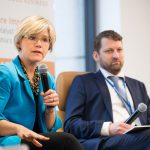 What is your role in the Social Capital Market?
What is your role in the Social Capital Market?
Speaker on Who Tells the Story? Emerging New Voices panel, part of Leveraging the New Media Currency track.
How might we re-imagine resources to create self-sustaining and thriving local communities?
Information is a critical resource, and prioritizing the creation and dissemination of local information is a path toward self-sustaining, thriving communities.
In Afghanistan, we work with a popular radio program, “Fix-it.” One episode addressed the lack of female health workers in Logar province clinics. Many families won’t allow women to be attended by male staff, so women just aren’t seen.
In a country with the second highest maternal mortality rate in the world, this was a tragic situation. Khanwali Ahmadzai, Fix-It’s 20-year-old producer, investigated, interviewed local government officials, and, as a result, a female midwife was hired.
But the impact of a thriving, open local media system goes beyond solutions to individual problems – strong local media contributes to stable societies. In a survey, 77% of Afghan respondents said they believed local media helps to ensure government accountability. This in a country in dire need of institutions people can trust.
What does Money + Meaning = to you? What should the social capital market stand for?
Money + Meaning means finding ways to invest in areas where a small bit of effort, or capital, or knowledge can transform the lives of others.
The benefit of investing in media as a means to improving societies is two-fold. Reliable, local-language, independent news and information improves lives on an immediate, transformational level. And, investing in local media makes societies more open over time. Empirical studies show that societies characterized by both press freedom and wide access to mass media are associated with many indicators of good governance and development. According to the United Nations Development Program, a free press is associated with better adult literacy, more income equality, better political stability, and less corruption, just to name a few.
Because media models are ideally self-sustaining, investing in local media and communication requires a shorter cycle of donor dollars, but results a perpetual cycle of positive impact.



